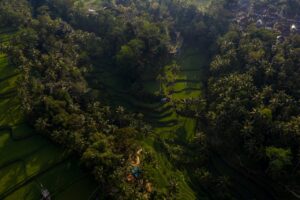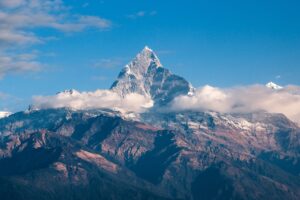
Explore & Play
Discover interesting topics and solve the accompanying crossword puzzle.
Dry Crossword | Arid Landscapes
Explore the dry crossword that challenges your knowledge of arid landscapes, complemented by an insightful article about these fascinating regions.
Table of Contents
Start your journey with our engaging Dry crossword, where you can test your knowledge of arid landscapes. If you’re familiar with the topic, dive right into the crossword first for a fun challenge. However, if you’re new to this subject, feel free to read the article to gain a deeper understanding before returning to tackle the crossword. Enjoy exploring the fascinating world of dry regions!
Dry Crossword
You can either fill in the crossword puzzle directly on this page or click the button in the bottom right corner to print it for free.

World's Driest Regions: Landscapes, Survival, and the Power of Nature
Arid landscapes across the globe hold a captivating allure, showcasing the extremes of nature and resilience in the face of scarcity. These regions, defined by limited rainfall and harsh conditions, are home to some of the most remarkable adaptations by plants, animals, and even humans. From expansive deserts and plateaus to stunning salt flats and towering canyons, each arid zone offers a unique glimpse into the strength of life against the odds.
To deepen your understanding, we’ve created a crossword puzzle filled with terms that define these remarkable landscapes. As you read through this article, you’ll encounter words that bring dry regions to life, each one featured in the crossword. Are you ready to explore the world’s driest regions and unravel the secrets of survival in these remarkable landscapes?
The Essence of Arid Regions: Defining Dry Climates
Arid climates are defined by limited rainfall, intense heat, and unique environmental challenges. While the images of barren landscapes and scorching sunlight come to mind, the truth is that these regions are far more complex and varied. The defining feature of arid climates is low precipitation, resulting in landscapes that range from rocky deserts to cracked salt flats. Arid regions are especially prone to drought, periods during which water is scarce and rainfall fails to meet the land’s needs. Heatwaves are another constant in these areas, often intensifying conditions and pushing both the land and its inhabitants to their limits. In such harsh environments, even the hardiest forms of life face significant challenges, and survival often depends on an impressive ability to conserve and protect resources. From the largest deserts to smaller pockets of arid land, these dry climates highlight the stark beauty and resilience of nature.Types of Arid Landscapes: Beyond Deserts
When we think of arid landscapes, deserts may come to mind first, but dry climates encompass a range of terrains. Deserts are just one category of arid regions, marked by sand dunes, sparse vegetation, and extreme temperatures. However, other landforms like plateaus, salt flats, canyons, cliffs, and craters each offer unique characteristics. A plateau is a raised area of land with a flat top, often formed by volcanic activity or erosion. These elevated terrains frequently experience little rainfall, making them just as dry as the deserts below. Salt flats are created when bodies of water evaporate, leaving behind expansive, cracked surfaces of mineral-rich salt. In contrast, canyons and cliffs reveal the power of erosion, with their steep walls and rocky faces carved over millennia by wind and water. Finally, craters—formed by volcanic eruptions or meteor impacts—are another dramatic feature often found in arid landscapes, creating deep depressions that stand out in the dry surroundings.Nature’s Sculptors: How Erosion and Climate Shape Arid Landscapes
Arid landscapes are masterpieces of nature, meticulously sculpted by the relentless forces of erosion and the unique challenges posed by climate. The intricate beauty of these environments is not merely a product of chance; rather, it is the result of dynamic interactions between various natural elements over millennia.Erosion: The Artist of the Landscape
Erosion plays a pivotal role in shaping arid terrains, transforming rock formations and soil into striking features. Wind, water, and temperature fluctuations work in concert to carve the land. For example, wind erosion can create stunning formations like hoodoos and arches, while the action of water during rare but intense rainfalls can lead to flash floods that drastically alter the landscape. Over time, these processes result in unique geological formations, such as mesas and buttes, that define many dry regions. Additionally, erosion exposes the underlying layers of earth, revealing geological history and providing insights into the climatic conditions of the past. This exposure often leads to the formation of alluvial fans, where sediment collects at the base of mountains, creating fertile ground that supports unique ecosystems. The balance between erosion and sediment deposition is crucial for maintaining the delicate ecology of these regions.The Role of Climate
Climate is the other significant sculptor of arid landscapes. With limited rainfall and extreme temperature variations, dry regions experience unique weather patterns that directly influence their topography. The high evaporation rates, combined with scarce precipitation, lead to distinct soil types and plant communities. For instance, in some desert regions, the intense sun can cause surface temperatures to soar during the day, while nights can be surprisingly cool. This fluctuation not only affects the physical landscape but also dictates the types of flora and fauna that can thrive in such harsh conditions. Adaptation becomes essential for survival, and over time, species that flourish in these environments develop remarkable features that enhance their resilience.Flora and Fauna of the Drylands: Adaptations for Survival
The flora and fauna of arid regions have evolved a range of unique adaptations to survive in their challenging environments. These adaptations enable them to conserve water, withstand extreme temperatures, and endure the harsh conditions that define their habitats.Plant Adaptations: Resilience in the Face of Adversity
Plants in drylands exhibit a variety of adaptations that enable them to thrive despite limited water availability. One of the most common adaptations is the development of deep root systems, allowing them to access moisture stored deep within the soil. For example, the mesquite tree boasts a taproot that can reach depths of up to 50 feet, tapping into underground aquifers that sustain it during prolonged dry spells. Additionally, many desert plants have evolved specialized structures to minimize water loss. Succulents, such as cacti, store water in their fleshy tissues and have waxy coatings on their surfaces to reduce evaporation. Others, like the sagebrush, have small leaves or even no leaves at all to minimize surface area and thus reduce water loss. Another remarkable adaptation seen in dryland flora is the ability to enter a state of dormancy. During particularly dry periods, certain plants can shed their leaves and survive as seeds or underground bulbs until conditions improve. This survival strategy ensures that they can quickly reestablish themselves once moisture becomes available again.Animal Adaptations: Mastering Survival
Similarly, the fauna of arid landscapes has developed an array of adaptations that enhance their chances of survival. Many animals are nocturnal, avoiding the scorching heat of the day and becoming active during the cooler nighttime hours. This behavior not only helps them conserve water but also allows them to hunt and forage in more favorable conditions. Other adaptations include physiological changes that enable animals to withstand dehydration. For instance, kangaroo rats can extract moisture from the seeds they consume, allowing them to survive without direct access to water for extended periods. Their bodies are also highly efficient at conserving water, with specialized kidneys that excrete concentrated urine. Camouflage is another survival strategy employed by many desert animals. Creatures such as the horned lizard use their natural coloration to blend in with the sandy environment, evading predators while remaining hidden from their prey. This interplay between adaptation and survival highlights the intricate balance of life in arid regions.Life on the Edge: Human Habitation in Arid Zones
Human habitation in arid zones is often characterized by resilience and adaptability. People have lived in these challenging environments for thousands of years, developing unique cultures and lifestyles that reflect the harsh realities of their surroundings.Adapting to the Environment
Inhabitants of arid regions have ingeniously adapted their lifestyles to cope with limited resources. Traditional knowledge passed down through generations plays a crucial role in survival. Many communities rely on ancient farming techniques, such as terracing and irrigation, to maximize water use and enhance crop yields. For instance, the cultivation of drought-resistant crops like millet and sorghum has allowed populations in sub-Saharan Africa to thrive in areas where conventional agriculture would fail. Housing in arid regions is also tailored to the environment. Structures are often built using local materials that provide insulation from extreme temperatures. Adobe and rammed earth constructions are common in places like the Southwestern United States and parts of North Africa, where thick walls help to regulate indoor temperatures, keeping homes cool during the day and warm at night. Moreover, the layout of communities often reflects a deep understanding of wind patterns and sun exposure, with narrow streets and strategically placed buildings that promote ventilation and shade. This architectural ingenuity demonstrates how human habitation can coexist with the natural landscape, fostering a sustainable way of life even in the most challenging conditions.Challenges Facing Arid Regions Today: The Threat of Climate Change
Despite the remarkable adaptability of human populations in arid zones, these regions face unprecedented challenges due to climate change. The impact of global warming is felt acutely in dry areas, where rising temperatures and changing precipitation patterns threaten both the environment and the communities that depend on it.Increasing Temperatures and Drought
One of the most significant effects of climate change is the increase in average temperatures, which leads to prolonged periods of drought. For example, regions like the American Southwest and parts of Australia are experiencing record-breaking heatwaves, resulting in severe water shortages. As freshwater sources dwindle, the agricultural practices that have sustained communities for generations become increasingly untenable. Drought not only affects crop production but also impacts the availability of drinking water. Many arid regions rely on groundwater, which is being depleted at an alarming rate. As aquifers are overexploited, the natural replenishment processes struggle to keep pace, leading to sinking water tables and increased competition for this vital resource.Desertification and Land Degradation
Climate change also accelerates desertification, the process by which fertile land becomes increasingly arid and unproductive. Factors such as deforestation, overgrazing, and unsustainable agricultural practices contribute to land degradation, reducing the resilience of ecosystems. As vegetation cover diminishes, soil erosion becomes more prevalent, leading to a cycle of degradation that can render once-productive areas barren. This transformation has dire consequences for local communities. As the land becomes less hospitable, traditional livelihoods based on farming and livestock herding are jeopardized. Displacement due to environmental factors is becoming more common, with many individuals and families forced to migrate in search of better living conditions. This phenomenon not only affects the social fabric of communities but also puts additional pressure on urban areas that may already be struggling with resources.Social and Economic Impacts
The challenges posed by climate change in arid regions extend beyond environmental concerns; they have profound social and economic implications as well. Water scarcity can lead to increased tensions between communities and nations, particularly in regions where rivers and lakes cross political boundaries. Conflicts over water resources have the potential to escalate, exacerbating existing inequalities and hindering development efforts. Furthermore, the economic impacts of climate change are felt disproportionately in arid areas, where livelihoods are often tied directly to agriculture and natural resources. As crop yields decline and livestock populations dwindle, food insecurity becomes a pressing issue. Vulnerable populations are particularly affected, as they may lack the resources to adapt to changing conditions or recover from environmental shocks.Beauty in Barren Places: The Allure of Arid Landscapes
While often viewed as empty or desolate, arid landscapes hold a unique beauty found nowhere else on Earth. The stark contrast between barren salt flats, towering cliffs, and sweeping sand dunes offers a visual experience unlike any other. Arid landscapes capture the imagination, inspiring artists, photographers, and travelers alike with their raw, untouched beauty.Sunsets over Sand: Awe-Inspiring Sights in Arid Regions
Sunset in a desert can transform the landscape, casting a warm glow over the rugged terrain. As the sun dips below the horizon, the colors of the landscape shift, painting the dunes, cliffs, and plateaus in hues of orange, pink, and gold. This fleeting beauty serves as a reminder of the resilience and grandeur of these dry regions.The Strength of Nature: A Lasting Impression of Arid Landscapes
From towering plateaus to the smallest shrubs, the landscapes of dry regions remind us of nature’s remarkable ability to thrive in adversity. These places, often perceived as barren or inhospitable, hold a beauty and strength that captivates and inspires. As you reflect on the remarkable traits of arid landscapes, remember that these regions are both delicate and powerful, revealing the resilience of life in the most unexpected places. Are you ready to put your knowledge to the test? Dive into our crossword puzzle and see how much you’ve learned about the incredible world of arid landscapes.Share to...
Thank you for reading 👋
I hope you enjoy the content.
I hope you enjoy the content.
Want to receive our daily crossword puzzle or article? Subscribe!
You may also be interested in
Share to…
Want to receive our daily crossword puzzle?
-
Jigsaw Puzzles
Nordkapp Abstract Art Jigsaw Puzzle 250 | 300 | 500 Pieces
kr 348,00 – kr 439,00Price range: kr 348,00 through kr 439,00 Select options This product has multiple variants. The options may be chosen on the product page -
Jigsaw Puzzles
Zodiac Watercolor Rooster Puzzle: Artful Elegance 250 | 300 | 500 Pieces
kr 348,00 – kr 439,00Price range: kr 348,00 through kr 439,00 Select options This product has multiple variants. The options may be chosen on the product page -
Jigsaw Puzzles
Whimsical Hamster Jigsaw Puzzle in Watercolor Style 250 | 300 | 500 Brikker
kr 348,00 – kr 439,00Price range: kr 348,00 through kr 439,00 Select options This product has multiple variants. The options may be chosen on the product page

















